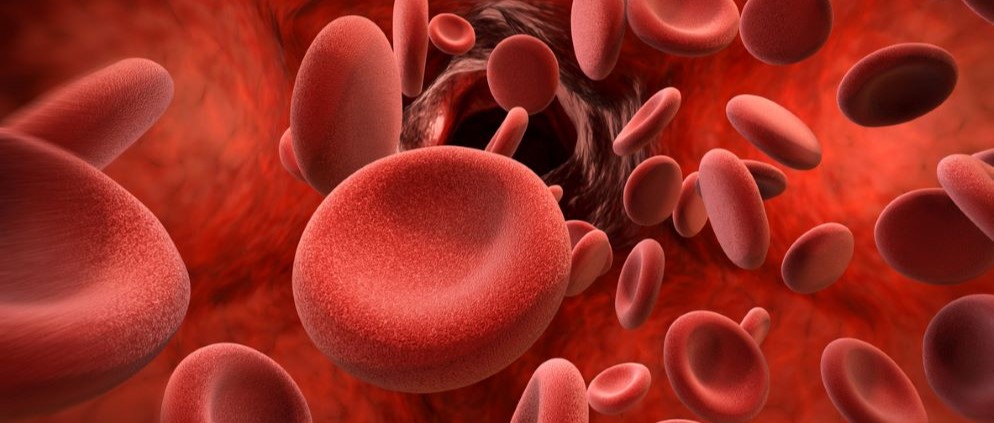IV fluid osmolarity: what to know for IV catheter selection
Multiple selection criteria will determine the appropriate vascular access device (VAD) for your patient.1 These include but are not limited to type of therapy, duration, age, comorbidities and vascular health.1 Understanding both the anatomy and physiology of the vascular system may help you make good vascular access choices to help reduce the risk of intravenous (IV) complications and ensure patient safety.1
IV fluid osmolarity is an important factor to consider when selecting the appropriate IV catheter for your patient. Infusates with incorrect pH or osmolarity levels often result in phlebitis.2 Those with very high or very low osmolarity may also result in infiltration or extravasation.3 Later in this article, we will discuss ways to help you prevent these IV complications with respect to osmolarity. But first, let’s define several terms.
Definitions for osmolarity
So, what exactly is osmolarity? According to the the Infusion Nurses Society (INS) 2024 Infusion Therapy Standards of Practice, osmolarity is defined as “the number of osmotically active particles in a solution.”1
When an IV fluid contains a higher osmotic concentration than blood cells, it is considered hypertonic.1 Hypertonic IV solutions can lead to the shrinkage of blood and endothelial cells.2 Some examples of hypertonic solutions include 5% dextrose and 0.9% sodium chloride injection, amino acid solutions, 50% dextrose injection and potassium chloride solution (2 mEq/mL).2
At the other end of the osmolarity spectrum are solutions that are hypotonic or have a lower osmotic concentration than cells.1 Hypotonic IV solutions may cause blood and endothelial cells to enlarge and burst.2 Some examples of hypotonic solutions include 0.45% sodium chloride solution and sterile water for injection.2
Blood plasma contains an osmolarity level of around 290 mOsm/L. If the IV solution has a higher level of osmolarity, this could lead to irritation, endothelial damage, phlebitis or even blood clots.4 Ideally, the fluid that you administer intravenously into your patients should be isotonic, meaning it has the same osmotic concentration as the cells.1 For example, a 0.9% saline solution is considered isotonic.2
More on this topic: 3 factors to consider in vascular access device selection
IV fluid osmolarity: What are the limits for IV medications?
How does osmolarity influence catheter selection? Different guidelines have different cut-offs for osmolarity between peripheral vascular access devices (PVADs) and central vascular access devices (CVADs).1,5
The European Recommendations for Proper Indication and Use of Peripheral venous access (ERPIUP) sets an osmolarity limit of 600 mOsm/L for medications infused through PVADs.5 Along with this, the ERPIUP consensus recommends CVADs for medications with osmolarity levels over 600 mOsm/L.5
The INS discourages the use of short peripheral intravenous catheters (PIVCs) when continuously infusing irritants or vesicants.1 If medication osmolarity is high, it increases the risk of extravasation.6
IV fluid osmolarity in parenteral nutrition
High levels of osmolarity in peripherally infused parenteral nutrition (PN) admixtures may engender a high risk of phlebitis.7 Along with other factors, the osmolarity of any PN admixture should be calculated prior to IV catheter selection to determine whether to place a PVAD or CVAD.7 The European Society for Clinical Nutrition and Metabolism (ESPEN) recommends peripheral PN should not have an osmolarity level greater than 850 mOsm/L.8
The ERPIUP consensus has set the limit of osmolarity for peripheral PN to up to 800–850 mOsm/L.5 PN admixtures over the ESPEN and ERPIUP limits mentioned above should preferably be infused with CVADs.5,8
More on this topic: Spanish vascular access team refines device selection algorithm
Quick tip: medication tables
Because IV fluid osmolarity is a crucial factor in IV catheter selection, Ballesteros-Peña et al. recommend using comprehensive medication tables with osmolarity levels for each medication as one possible method for reducing the potential risk of phlebitis caused by incorrect osmolarity.4
However, standard medication data sheets contain osmolarity levels for medications before dilution and may differ from the final formulation’s osmolarity.1,4 This is why they recommend that these tables contain osmolarity for different dilutions.4
Three practice recommendations for IV fluid osmolarity
- Be aware of the recommended osmolarity limits for PVADs1,5
- Verify the osmolarity of each diluted solution before IV catheter selection4
- Consider using medication tables with osmolarity rates for each medication4
Along with infusate characteristics like osmolarity, understanding both the anatomy and physiology of the vascular system may help you make good vascular access choices for your patients. Ideally, patients will receive VADs to administer their therapies safely and effectively over the course of their treatment. We’ve put together this Vascular Access Device Assessment Decision Tree to guide you in IV catheter selection.
References
- Nickel B, Gorski L, Kleidon T, et al. Infusion Therapy Standards of Practice, 9th Edition. J Infus Nurs. 2024;47(1S Suppl 1):S1-S285. doi:10.1097/NAN.0000000000000532
- Stranz M, Kastango ES. A Review of pH and Osmolarity. Int J Pharm Compd. 2002;6(3):216-220.
- Dychter SS, Gold DA, Carson D, Haller M. Intravenous therapy: a review of complications and economic considerations of peripheral access. J Infus Nurs Off Publ Infus Nurses Soc. 2012;35(2):84-91. doi:10.1097/NAN.0b013e31824237ce
- Ballesteros-Peña S, Fernández-Aedo I, Vallejo-De la Hoz G, Tønnesen J, Miguelez C. Identification of potentially irritating intravenous medications. Enferm Intensiva. 2022;33(3):132-140. doi:10.1016/j.enfie.2021.05.003
- Pittiruti M, Van Boxtel T, Scoppettuolo G, et al. European recommendations on the proper indication and use of peripheral venous access devices (the ERPIUP consensus): A WoCoVA project. J Vasc Access. 2021;24(1):165-182. doi:10.1177/11297298211023274
- Yan YM, Gong M, Chen JL, et al. Incidence, risk factors and treatment outcomes of drug extravasation in pediatric patients in China. Turk J Pediatr. 2017;59(2):1621-1168. doi:10.24953/turkjped.2017.02.008
- Worthington P, Balint J, Bechtold M, et al. When Is Parenteral Nutrition Appropriate? J Parenter Enter Nutr. 2017;41(3):324-377. doi:10.1177/0148607117695251
- Pittiruti M, Hamilton H, Biffi R, MacFie J, Pertkiewicz M. ESPEN Guidelines on Parenteral Nutrition: central venous catheters (access, care, diagnosis and therapy of complications). Clin Nutr Edinb Scotl. 2009;28(4):365-377. doi:10.1016/j.clnu.2009.03.015
This list of references to third-party peer-reviewed material and the sites they are hosted on are provided for your reference and convenience only, and do not imply any review or endorsement of the material or any association with their operators. The Third-Party References (and the Web sites to which they link) may contain information that is inaccurate, incomplete, or outdated. Your access and use of the Third Party Sites (and any Web sites to which they link) is solely at your own risk.
BD-125686




